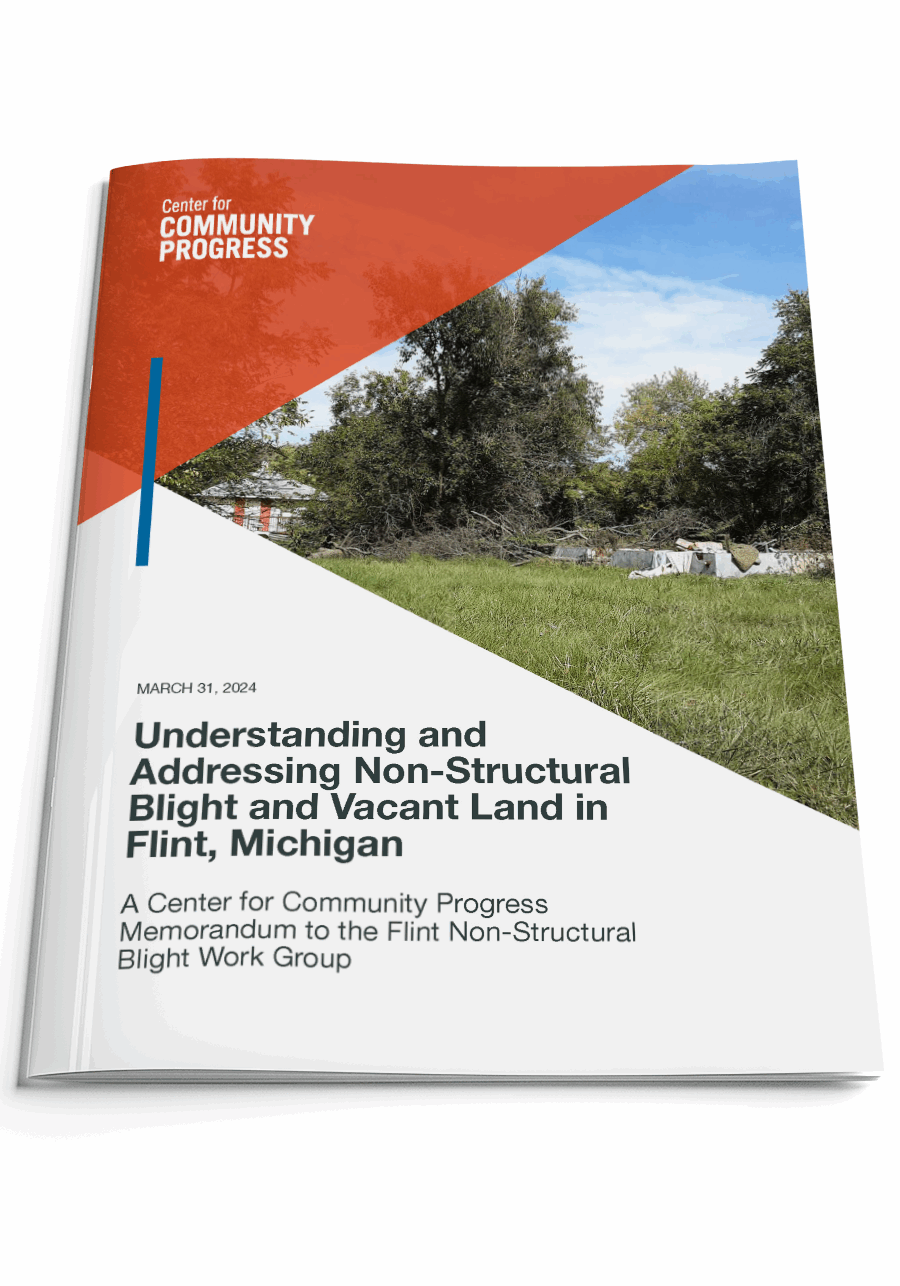Understanding and Addressing Non-Structural Blight and Vacant Land in Flint, MI
A Memo to the Flint Non-Structural Blight Work Group
Topic(s): Local Analysis, Vacant Land Stewardship
Published: March 2024
Geography: Michigan
Author(s): Janell O'Keefe
This memorandum serves to provide a summary of the work completed through the Flint Non-Structural Blight Work Group from April of 2023 to March of 2024. It details the participants and process, findings such as defining types of non-structural blight, key observations, a concept for a vacant land stewardship strategy, and specific next steps.
Work Group Process Overview
The Ruth Mott Foundation (Ruth Mott) convened a group of Flint stakeholders to discuss non-structural blight at the end of 2022 and beginning of 2023. The need to discuss non-structural blight arose from the focus on demolition in Flint’s American Rescue Plan Act State and Local Fiscal Recovery Funds (ARPA SLFRF) allocation and city council and resident concerns that non-structural blight was also a significant problem and needed to be addressed.
Through the initial three meetings, the group identified two primary goals: (1) better coordination of existing programs to address immediate needs and (2) a collective inventory of the full depth and breadth of work happening in Flint related to non-structural blight and vacant lots, including current limitations and barriers, to identify opportunities to address non-structural blight and lay the foundation for a comprehensive, long-term stewardship plan for vacant lots.
Ruth Mott invited Center for Community Progress (Community Progress) to participate in the second meeting and expressed interest in us leading a process with this group similar to our past Community Development Working Group. The larger group was receptive to this and a smaller group consisting of Community Progress, Neighborhood Engagement Hub (NEH), Genesee County Land Bank Authority (GCLBA), and the City of Flint Planning Department (City) met to discuss and fine tune process, objectives, and deliverables for the Non-Structural Blight Work Group (Work Group).
What is “non-structural blight”?
Through this process, the Work Group determined a primary need was to define what they meant by non-structural blight (NSB), as there was not a consensus understanding or definition at the outset. Through a series of activities in Work Group meetings, they determined the following characteristics of NSB:
- Has visual indications of lack of care, making the parcel unsightly or an eyesore. For example, a lack of maintenance, accumulation of household goods outdoors, and intentional dumping (e.g., construction waste, tires).
- Has other nuisances (e.g., groundhogs) and/or hazardous materials present.
- Can occur on parcels with and without structures.
- Can occur on parcels with occupied or vacant structures.
- Is not synonymous with “vacant lot” (some vacant lots are NSB and some are not).
- To further narrow in on what is, and is not, NSB, the Work Group reviewed four common property characteristics: presence of a structure, occupancy of structure, condition of structure, and presence of tall grass, weeds, trash, and/or debris. Using these characteristics, the Work Group then discussed whether specific combinations constituted NSB.
Download the memo for a full summary of the Work Group’s findings.

Topic(s): Local Analysis, Vacant Land Stewardship
Published: March 2024
Geography: Michigan
Related Publications
Other Related Content
Subscribe to join 14,000 community development leaders getting the latest resources from top experts on vacant property revitalization.
